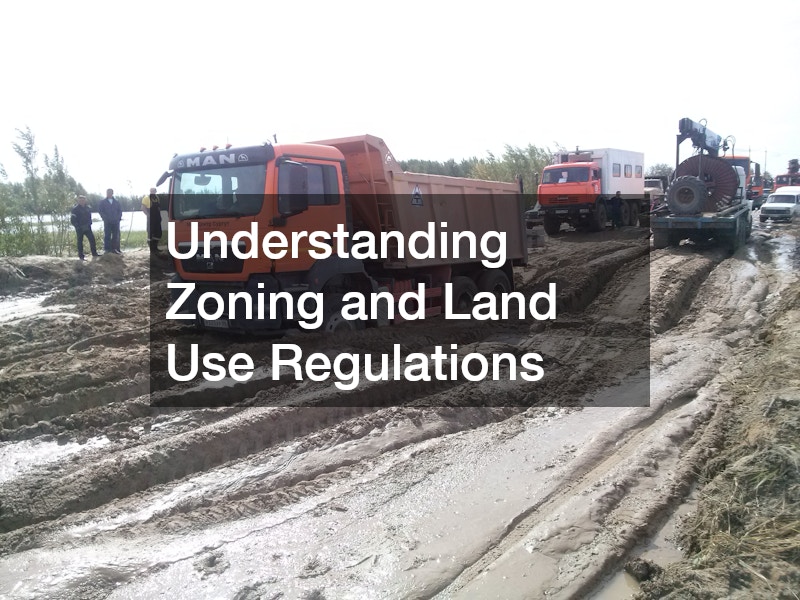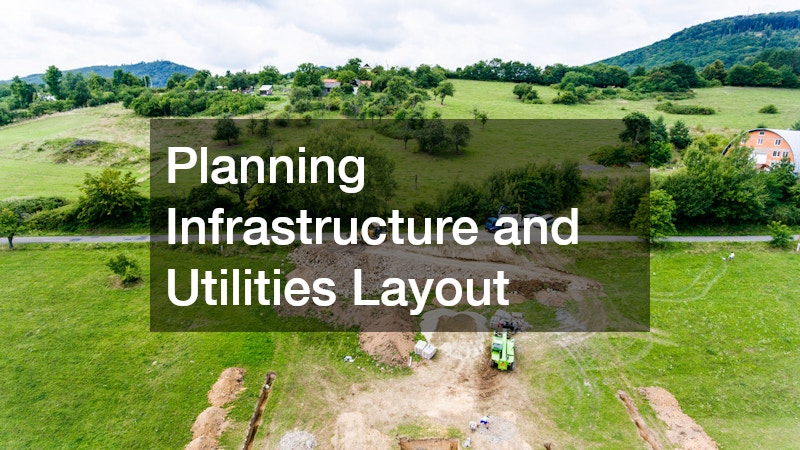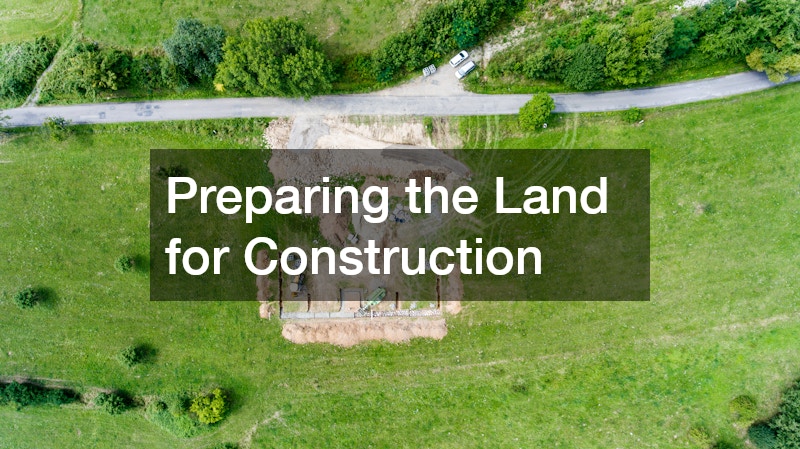Beginning Residential Development
Residential land development involves transforming raw land into a livable community, which can include residential homes, amenities, infrastructure, and green spaces. This process is complex, requiring a thorough understanding of local regulations, environmental considerations, and proper planning to ensure a successful project. Developers must navigate various legal, logistical, and financial hurdles to turn a vision into reality. From the initial concept and feasibility study to the final inspection and handover, residential land development consists of multiple stages, each critical to the project’s outcome. At its core, it aims to create well-planned, safe, and appealing residential areas that meet the needs of future residents while adhering to local zoning laws and sustainability practices.

Understanding Zoning and Land Use Regulations
The first step in residential land development is understanding the zoning and land use regulations that govern a specific area. Zoning laws define how land can be used, whether for residential, commercial, industrial, or mixed purposes. These regulations impact everything from the density of housing to the type of structures that can be built. Local government agencies establish these rules to ensure orderly growth and preserve community character. Developers must conduct thorough research to understand zoning requirements, setbacks, height restrictions, and any special permits needed. This foundational knowledge allows them to plan effectively and avoid legal issues later in the development process.
General contractors play a vital role in navigating zoning and land use regulations. Before breaking ground, they must confirm that all planned construction aligns with the zoning laws. This may involve collaborating with city planners, attending zoning board meetings, and working with legal experts to address any potential conflicts. By understanding the rules and guidelines early on, general contractors help ensure that the residential land development proceeds without delays, meeting all legal obligations and community standards.
Conducting a Feasibility Study for Development
Once the zoning and land use regulations are understood, the next step in residential land development is to conduct a feasibility study. This study assesses whether the project is viable from a financial, environmental, and logistical standpoint. It examines factors such as soil conditions, access to utilities, proximity to amenities, and the overall market demand for new housing. A well-executed feasibility study helps developers determine if the project will be profitable and identifies potential challenges that may arise during the development process. This information is crucial for investors, stakeholders, and planning teams as they move forward.
For example, when including amenities like homes with specific architectural styles, developers may consult with a roofing company to ensure the feasibility of certain design choices. This collaboration helps in estimating costs for roofing materials, labor, and installation, which are essential for accurate budgeting and planning. Partnering with experts early in the feasibility phase ensures that the residential land development can accommodate desired features without exceeding financial constraints.

Acquiring Land for Residential Projects
Acquiring land is a critical step in the residential land development process, as it sets the foundation for the entire project. Developers must carefully choose a location that aligns with their vision, meets market demand, and is accessible to essential services and amenities. This step involves researching property availability, negotiating with landowners, and understanding the legal aspects of land acquisition. Additionally, developers must consider the costs associated with purchasing the land and ensure that it fits within their overall budget for the project. Proper due diligence at this stage helps prevent future complications and ensures a smooth transition into the development phases.
When acquiring land, developers may need to coordinate with an electrical company to assess the site’s access to electrical infrastructure. Ensuring that the location can support the required power supply is vital for both residential units and community facilities. Early involvement from an electrical company can help identify any necessary upgrades or new installations, allowing developers to factor these costs and requirements into their overall planning. This proactive approach is essential to avoid delays or unexpected expenses during the construction phase of residential land development.
Navigating the Permitting and Approval Process
Once the land is acquired, developers must navigate the permitting and approval process before starting construction. This involves submitting detailed plans to local authorities, which outline the scope of the project, building designs, and compliance with safety and environmental regulations. Permits are required for various aspects of residential land development, including construction, utility installation, and environmental impact management. The process can be time-consuming, as it may involve multiple reviews and adjustments to meet legal requirements. However, obtaining the necessary permits is crucial to ensure that the project adheres to all local laws and regulations.
Concrete companies often become involved during this phase, as permits are needed for foundational work, sidewalks, driveways, and other concrete structures. Developers work closely with these companies to ensure that the designs and construction plans meet regulatory standards. By coordinating with a concrete company early in the permitting process, developers can address any concerns regarding material specifications and installation methods. This collaboration ensures that all concrete-related aspects of the project are approved, facilitating a smoother transition to the construction phase of residential land development.

Planning Infrastructure and Utilities Layout
Planning the infrastructure and utilities layout is a crucial step in residential land development, as it determines how the community will function. This includes designing the layout for roads, water and sewer systems, electrical grids, and communication networks. Proper planning ensures that all utilities are easily accessible and integrated seamlessly into the community. Developers must work with various specialists to create a comprehensive infrastructure plan that meets current standards and anticipates future needs. This planning phase helps streamline the construction process and minimizes disruptions once residents begin moving into the development.
Landscaping contractors play a significant role in planning the infrastructure layout by integrating natural elements with essential utilities. They help design green spaces, drainage systems, and other environmental features that complement the residential community. Working alongside engineers and urban planners, landscaping contractors ensure that the development balances functionality with aesthetics, creating a cohesive and sustainable environment. Proper coordination with landscaping contractors allows developers to enhance the appeal of the residential land development while efficiently managing resources and utilities.
Designing the Residential Development Blueprint
Designing the development blueprint is a key phase of residential land development, where the vision for the project starts to take a concrete shape. This blueprint includes detailed plans for the layout of homes, roads, community amenities, and green spaces. Developers collaborate with architects, engineers, and urban planners to create designs that meet local building codes, safety standards, and aesthetic goals. This stage involves making crucial decisions on the size and style of residential units, the arrangement of public spaces, and the overall flow of the community. A well-designed blueprint ensures that all elements of the development work together harmoniously, providing residents with a functional and pleasant living environment.
Paving services are often a critical component during the blueprint design phase, as they help plan the layout of roads, pathways, and parking areas within the community. By working closely with a paving services provider, developers can ensure that all roadways are designed for durability, safety, and easy navigation. The expertise of paving professionals allows developers to incorporate appropriate materials and techniques into the design, which helps reduce long-term maintenance costs and enhances the overall quality of the residential land development. Proper planning with paving services ensures smooth transitions between different areas of the community, contributing to a cohesive and efficient layout.

Preparing the Land for Construction
Preparing the land for construction is a critical step that involves clearing, grading, and stabilizing the site to make it suitable for building. This process ensures that the land is level and that any potential hazards, such as unstable soil or unwanted vegetation, are addressed. Developers must also consider the drainage system to prevent flooding and erosion, which can damage structures and infrastructure. Land preparation sets the stage for a smooth construction process, ensuring that the foundation and subsequent building phases are executed without unexpected issues. Proper site preparation is essential for maintaining safety, efficiency, and compliance with local regulations during residential land development.
During this phase, spray foam insulation contractors may become involved to address potential insulation needs early in the planning. For instance, if the development includes basements or areas requiring specific temperature controls, planning for insulation ahead of construction can save time and resources. Spray foam insulation contractors can provide insight into which materials and techniques will best suit the design and layout, ensuring energy efficiency and comfort for future residents.
Managing Environmental Impact Assessments
Managing environmental impact assessments (EIAs) is a crucial aspect of residential land development, ensuring that the project complies with environmental regulations and minimizes its ecological footprint. These assessments evaluate how the development will affect local ecosystems, including water sources, wildlife habitats, and vegetation. Conducting an EIA involves consulting environmental experts, gathering data, and creating reports that outline potential impacts and suggest mitigation measures. Addressing environmental concerns is not only a legal requirement but also a responsibility for developers to promote sustainable practices and preserve the natural surroundings of the development.
Land clean up services often play an essential role in this process. Before construction can proceed, the land must be cleared of any debris, hazardous materials, or contaminants that could pose a risk to the environment or future residents. By partnering with a land clean up service, developers can ensure that the site is properly prepared and that all environmental regulations are met. This collaboration helps in creating a safe, clean foundation for residential land development while maintaining ecological balance.
Overseeing Construction and Site Development
Overseeing construction and site development is a central part of the residential land development process, where the physical structures and infrastructure come to life. This phase involves coordinating various contractors, suppliers, and labor teams to ensure that everything is built according to the blueprint and specifications. Effective project management is essential, as it helps maintain schedules, control budgets, and address any issues that may arise during construction. Developers must ensure that all safety protocols are followed on-site, and regular inspections are conducted to verify that the work meets quality standards. Successful oversight during construction leads to a smoother, more efficient build and minimizes delays.
Heavy equipment rental services are often crucial during this phase, providing access to machinery needed for tasks such as excavation, grading, and lifting heavy materials. Developers rely on these services to source equipment like bulldozers, cranes, and backhoes without committing to expensive purchases. Collaborating with a reliable heavy equipment rental company ensures that the right tools are available when needed, which helps keep the construction phase on track.
Completing the Final Inspection and Handover Process
The final inspection and handover process marks the conclusion of the residential land development project. During this phase, thorough inspections are conducted to ensure that all aspects of the development comply with building codes, safety regulations, and the original design specifications. Any issues identified during inspections must be resolved before the project is deemed complete. Once everything is approved, the development is handed over to property managers, homeowners, or other stakeholders. This phase also involves finalizing legal documentation, addressing any outstanding permits, and ensuring that the site is clean and ready for occupancy. A smooth handover process reflects well on the developer’s reputation and ensures client satisfaction.
Dumpster roll off rental services are often utilized during the final stages of the project to manage the disposal of construction debris and waste. Efficient waste management is crucial to maintaining a clean, safe environment, particularly before inspections and the final handover. By partnering with a dumpster roll off rental service, developers can ensure that all remaining materials are properly disposed of, making the site presentable and compliant with environmental regulations.
Maintaining Good Property Value
Residential land development is a multifaceted process that requires meticulous planning, collaboration, and coordination. From the initial stages of understanding zoning laws to the final handover, each step plays a vital role in shaping the success of the project. Developers must navigate legal requirements, conduct feasibility studies, acquire land, and manage numerous contractors to ensure that everything progresses smoothly. By addressing environmental impacts, planning infrastructure, and overseeing construction, developers can create well-designed, functional communities that meet the needs of future residents.
